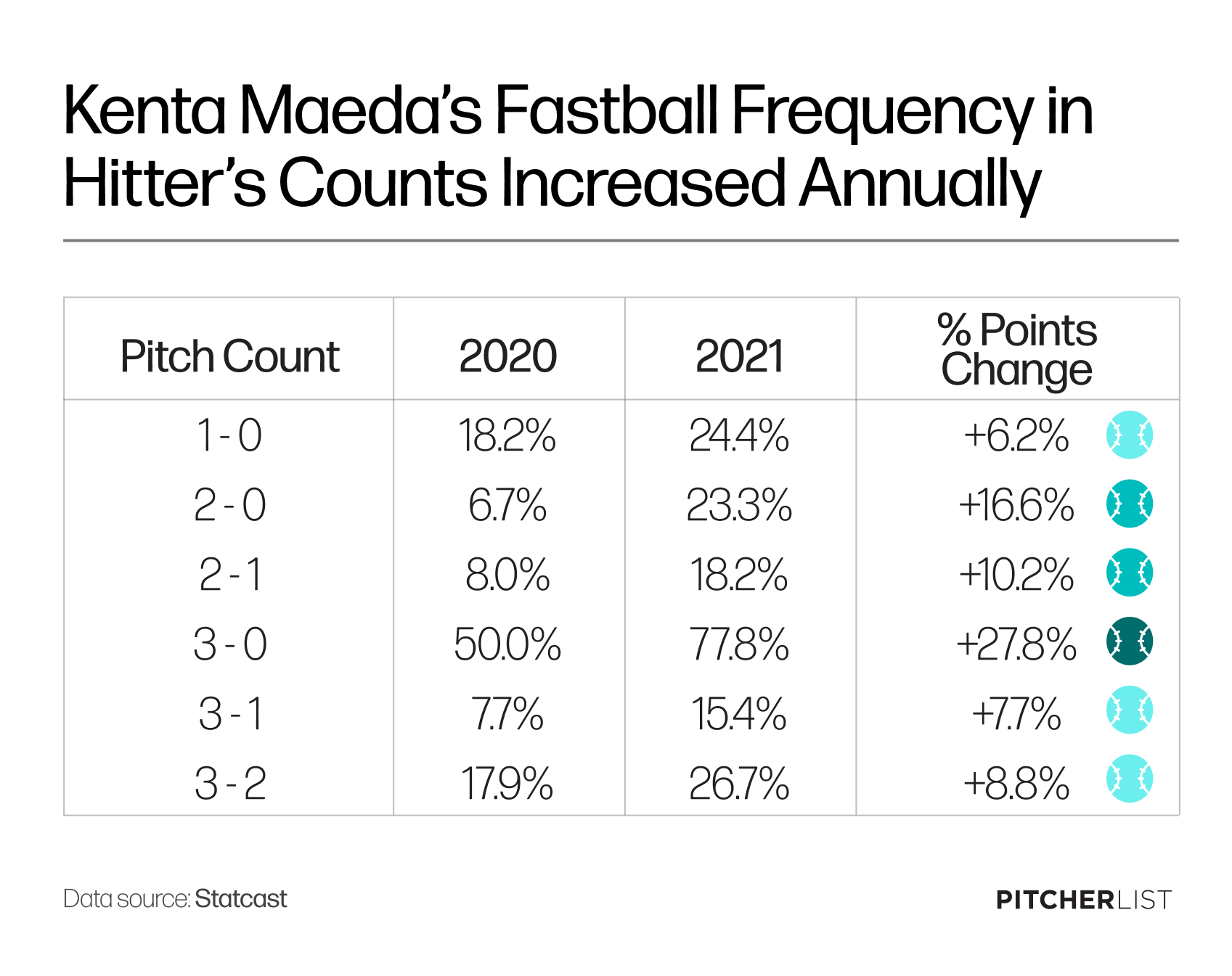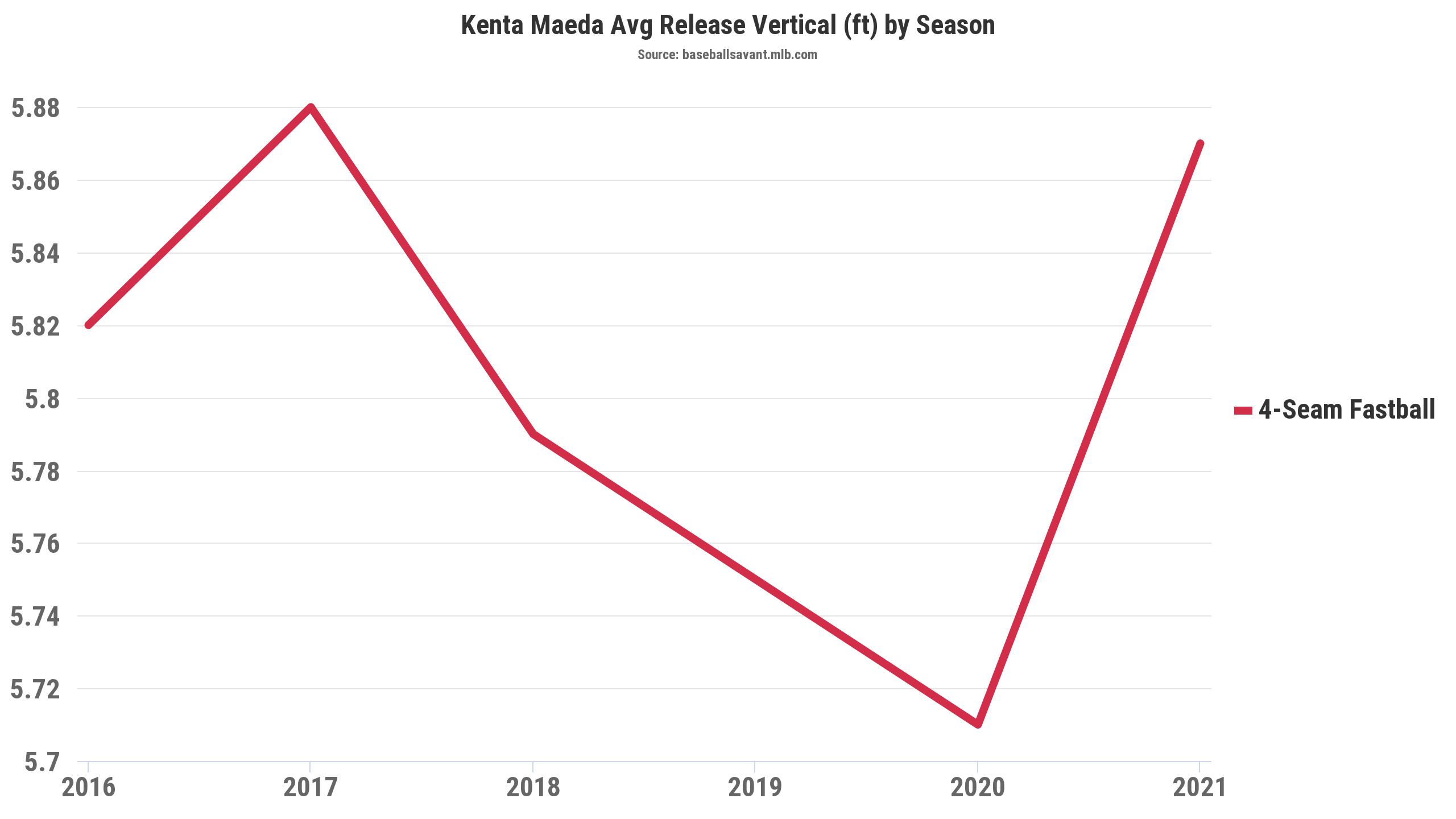It was only fair to expect a slight drop-off from Kenta Maeda in 2021.
The right-hander put forth a career performance in his previous season, posting an MLB-best 0.750 WHIP across 11 starts and finishing second in Cy Young voting. But with the return of a typical 162-game campaign, it wouldn’t have been surprising to see Maeda’s numbers right-sizing closer to his career averages.
Instead, they went past that and got far worse. Maeda’s ERA, FIP and WHIP have never been higher than they were in 2021, a season that concluded in September after an elbow injury sent him under the knife for Tommy John surgery.
Maeda’s struggles from last season were jarring after what he did in 2020, but they appear to be rooted in his fastball. It’s a pitch that was sparkling for Maeda during the previous season, and one that fell apart in epic fashion last summer.
There’s no overstating how effective Maeda’s four-seamer was during his standout 2020 campaign. As Cole Bailey previously noted, Maeda drastically reduced his fastball usage rate that season, both in general and when facing hitters’ counts (1-0, 2-0, 3-0, and 3-1). By doing so, he was able to catch hitters off guard and produce absurd numbers with a four-seamer that boasts notably below-average velocity.
| Year | Fastball Usage Rate | Strikeout Rate | ISO | wOBA | wRC+ |
| 2019 | 34.2% | 19.7% | .239 | .385 | 146 |
| 2020 | 18.7% | 43.2% | .029 | .119 | -21 |
With improvement that significant, it was hardly shocking to see Maeda up his fastball usage in 2021. Now boasting a suddenly-effective four-seamer to pair with an above average slider and splitter, Maeda seemed destined to build upon his 2020 season in a big way.
Unfortunately, Maeda’s fastball turned into a Murphy’s Law offering in 2021. Its average velocity had never been lower (90.6 mph). The numbers put up against it – particularly a .395 wOBA and 159 wRC+ – had never been worse.
When it comes to why his fastball cratered, the cause was multifaceted.
For starters, Maeda ditched the approach that seemed to help his fastball the most during the previous season. After rarely using his four-seamer in several hitters’ counts in 2020, he once again started throwing it more frequently at a time when opponents were looking for something appealing to mash.

Created by @visual_endgame on Twitter.
Maeda was throwing a pitch that has never moved slower more frequently in situations where hitters were free to swing away. To make matters worse, he also happened to be throwing it in the worst possible locations.
In fact, four of his six most frequently targeted fastball locations in 2021 featured opponent wOBAs that ranged from above-average to torrid.
One would think Maeda doesn’t view hurling a 90 mph four-seamer right down the pipe as a productive strategy. Still, why was this offering so frequently being thrown at or around the heart of the plate in 2021?
One reason might be a notable change in his fastball release point.

Data and graphic provided by Statcast
Maeda’s average four-seam release point was 5.87 feet in 2021, up from 5.71 feet during the previous season. Not since 2017 has his fastball release point been this high.
When looking at the below examples from 2020 and last season, it’s hard to spot any discernible year-over-year differences in his delivery that would explain such an increase. He added an early arm extension before getting into his windup last year, but the overall pitching motion from there is essentially identical.
Yet, when you take a deeper look, there’s one slight variation that might be causing the jump in elevation.
During the 2020 season, Maeda’s right foot is located at the center of the rubber when he’s releasing his fastball. Last year, it moved closer to the right side.
Whether intentional or not, this shift in Maeda’s delivery appeared to result in his body being slightly elevated at the point of release. With his right leg not extended back as far as it was in 2020, the ball came out of his hand higher than it had in the past four seasons.
A slow fastball was being frequently elevated towards the heart of the plate, and often in counts that favored hitters. It was, in no uncertain terms, a recipe for disaster.
Maeda’s splitter, though not as dominant as it was during his Twins debut, was still an effective pitch in 2021. The same can be said about his slider.
But nothing seemed to have a bigger impact on Maeda’s overall performance than an upped-usage fastball that was used in all the wrong ways.
Maeda will miss, at best, a solid chunk of the 2022 season as he recovers from Tommy John surgery. Whenever he returns to the mound, he’ll need to figure out what made his fastball so special in 2020 before you can bet on him to look as good as he did overall that season.
Photo by Nick Wosika/Icon Sportswire | Adapted by Justin Redler (@reldernitsuj on Twitter)
